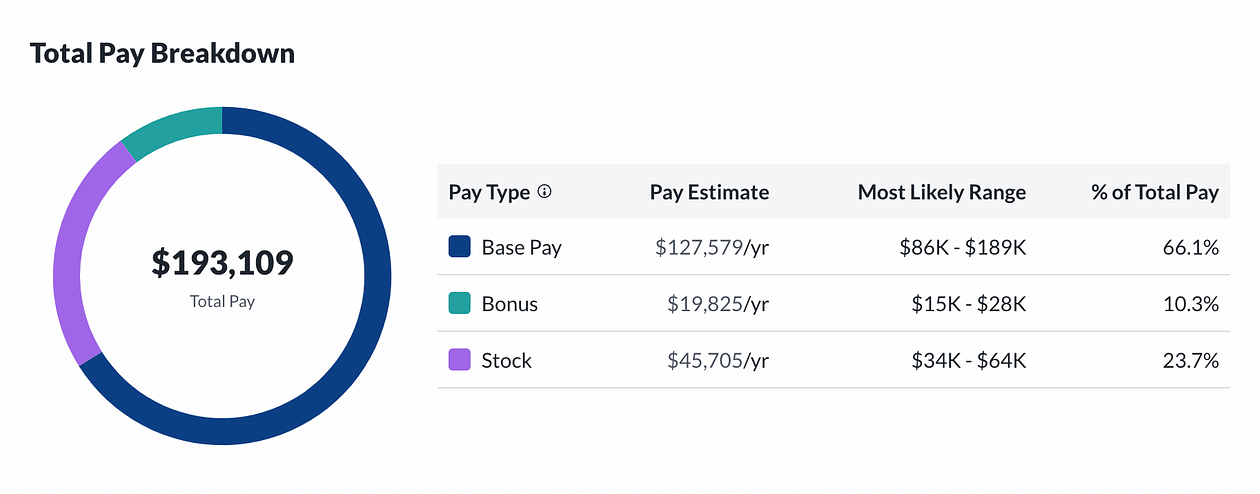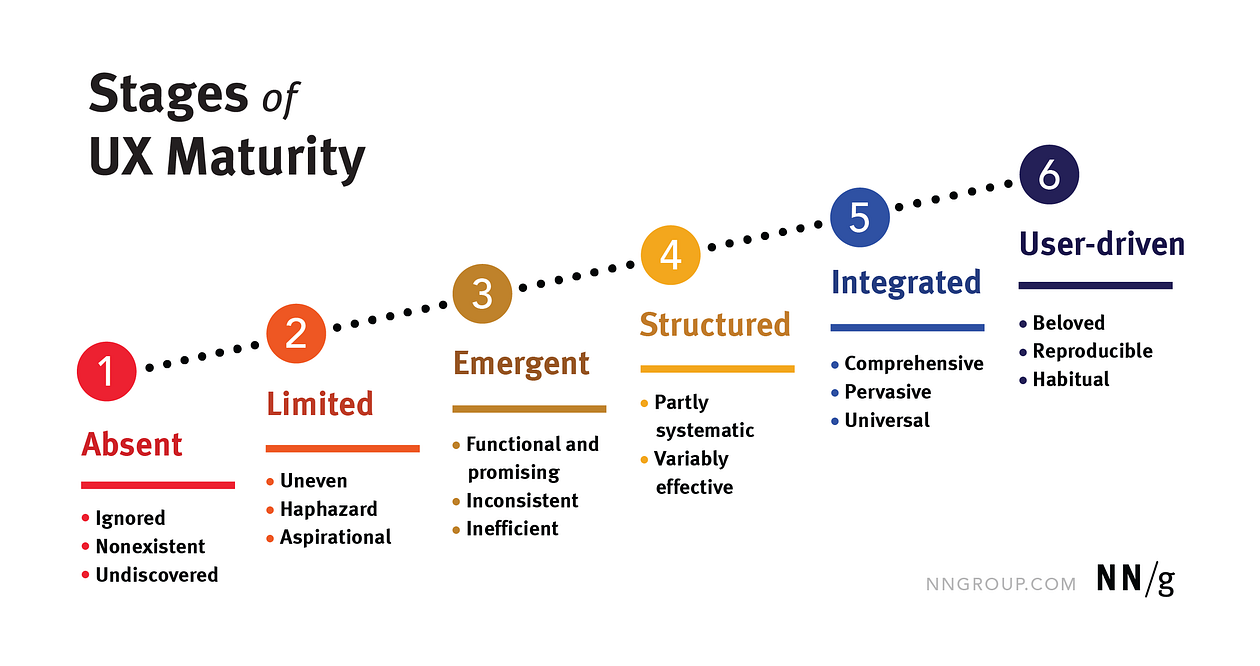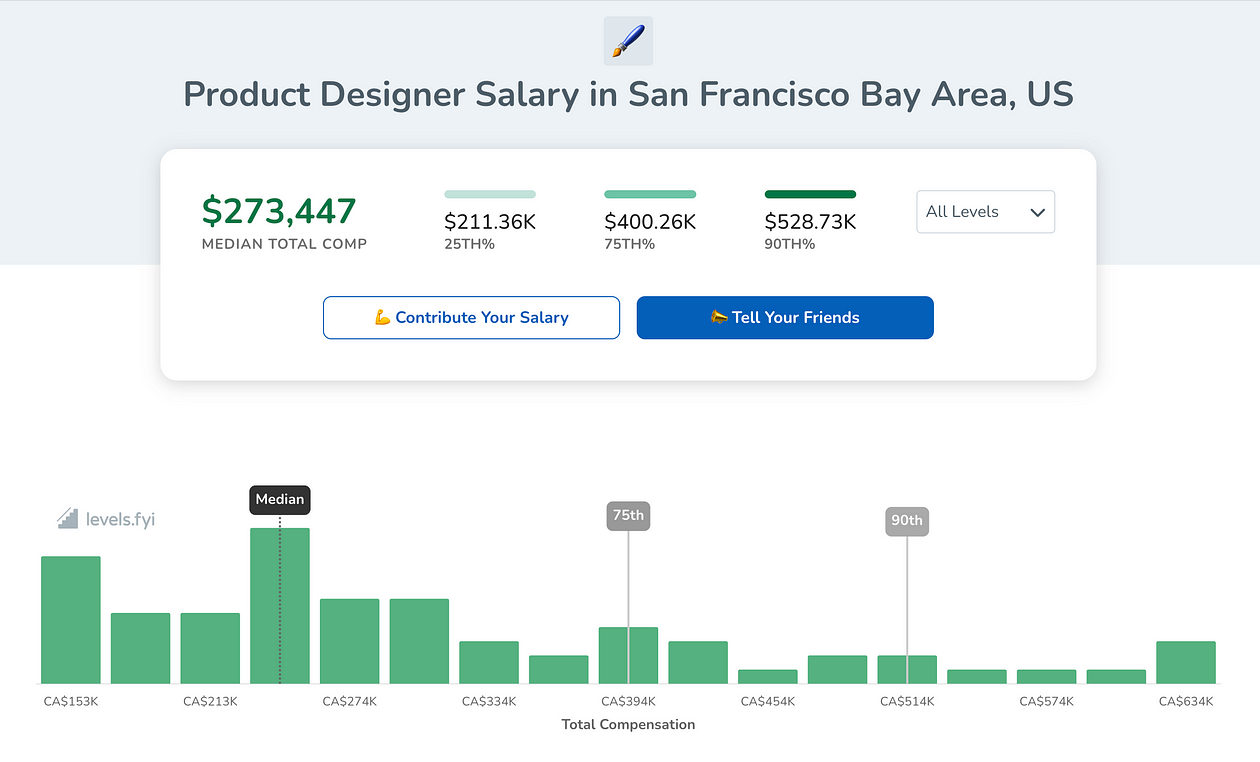In 2019, my starting salary as a new grad UX designer living in Toronto was $76,500.
Comparing that with the city’s average income of $52,700 puts into perspective how well UX designers in tech are paid.
But as good as it may seem, it’s no secret that not everyone is paid fairly.
The average base salary for a User Experience (UX) Designer in the United States ranges from around $90,000 to $120,000.
These are some of the reported average base salaries for a UX designer working in the United States.
Built In reports an average base salary of $92,894.

Indeed reports an average base salary of $99,707.

Glassdoor reports an average base salary of $121,404.

Needless to say, the average salary range for a UX designer in the U.S. is well above the median salary of $54,132 across the country.
As the field of UX design continues to grow in demand, the salaries for UX design jobs will likely continue to increase as well. Many tech companies are now seeing the value of UX designers and are willing to pay top salaries for experienced professionals in order to stay competitive.
How is compensation broken up?
The compensation structure for UX designers can vary, depending on the company.
Base salary
The most common form of compensation and paid in cash.
Bonuses
Additionally, some companies offer bonuses that get paid in cash or equity.
A performance bonus is usually paid out annually or twice a year and is based on the employee meeting or exceeding expectations. The company’s financial health can affect how much of a bonus is actually paid out to employees.
A sign-on bonus might also be offered as a one-time payment after signing the job offer, or paid over time.
Equity
Some tech companies also offer equity as part of their compensation structure.
Equity is paid in the form of stock options or restricted stock units (PSUs). These offer employees shares of ownership of the company as an incentive to do their best work.
Equity often includes a vesting schedule, which gives employees the right to ownership of the equity over a period of time. Vesting is a way for employers to entice employees to stay with the company for longer periods of time.

How is pay determined?
Your total compensation depends on several different factors, including:
- Pay model — location-based vs. role-based
- Perceived level of seniority — the level at which the company places you
- Job tenure — How long you’ve been at the company
- Negotiation — how well you negotiated your salary
Let’s talk about how each of these factors plays a role in a UX designer’s compensation.
Pay model
There are two common pay models that companies typically follow: location-based and value-based.
Companies that adopt a location-based pay model factor in the cost of living, and local market rates, and adjust their salaries according to experience level.
Others that use a value-based pay model follow a salary range for each role and level, independent of location.
If you live in a high-cost-of-living area, like San Francisco or New York, it’s likely that a company paying based on location will offer more than a value-based paying company.
Should companies pay their employees based on their location or the value of their role?
In companies with low UX maturity, they may not set aside enough budget to hire at the market rate, simply because they value design less than other roles.

For early-stage startups, they may not have the cash to pay you a competitive salary and opt for compensating you with equity instead.
Regardless of what the company offers, it’s up to the candidate to decide if the offer is acceptable for the value that they can bring.
Perceived level of seniority
Your level of seniority at one company may not be the same at another. Your “perceived” level of seniority is the level your company thinks you can perform at in the context of their organization.
You might be the VP of Design at a 300-person startup, but after interviewing at Meta, they might perceive your level as a Senior Designer.

The higher your seniority level in a company, the higher the pay band is. But pay bands are different across companies, so depending on the company, taking a lateral or even down-level move could actually come with a pay raise.

It’s up to your interview performance to convince the hiring manager that you are capable of working at the level that you want.
Job tenure
Each year, employees can usually expect a salary increase, dependent on economic conditions and the company’s performance.
Historically, pay raises average around 3%, while in 2022, the average was around 4.6%. Although, with an inflation rate between 6% and 10% in 2022, employees have effectively lost purchasing power as their income hasn’t kept up with inflation.
You can start to see that the longer you stay with an employer, the greater your chances of becoming underpaid compared with market rates.
With the increasing instability of employment in tech and the demand for talent, designers have a greater incentive to job-hop every few years than to stay loyal to one company.
Some reasons for job-hopping include more money, better benefits, and greater flexibility.
How to offset inflation
- Renegotiate your salary. Talk to your manager to see if there’s any room to adjust your compensation to the market rate. You won’t get any more money if you don’t ask for it, so advocate for yourself.
- Switch jobs. Look for opportunities outside of your company. Changing jobs every two to three years will allow you to gain new experiences while renegotiating your compensation with a new employer. This can help bump up your compensation to the market rate and accelerate your earnings. However, beware of frequent job hopping as managers might avoid hiring you due to concerns about you leaving.
Negotiation
Know your worth by doing research on what your role pays at your current level. You don’t want to enter negotiations and set the bar too low.
“Everything is negotiable. Whether or not the negotiation is easy is another thing.”
— Carrie Fisher (Princess Leia)
Some resources I use to compare compensation include:
- Levels.fyi — Levels.fyi lets you compare career levels & compensation packages across different companies.
- Glassdoor — Search salaries and compensation at thousands of companies. Find out if you’re paid fairly. Share your salary anonymously to help others.
- Blind—Using real-time data, our Salary Comparison tool will analyze and compare your salary with compensation information submitted by verified employees from similar roles. Start your salary negotiation right.
These sites gather salary data from anonymous user submissions to improve pay transparency in the tech industry.

Discussing pay during interviews
During your first interview round, ask the recruiter for the expected salary range for the role. This will give you an idea of what to expect in an offer and help you decide whether or not it’s worth continuing the interview process for that company.
Before you enter a negotiation, make sure you have an idea of the market range and start negotiations at the high end.
You can also negotiate your other forms of compensation, such as bonus percentages, equity amounts, or even your benefits, like the number of vacation days or health benefits.
Is the money worth it?
In general, the salaries for UX design jobs are very competitive and can be quite lucrative for those with the right experience and education. As the field continues to grow, more tech companies will be looking for talented UX designers, and salaries will likely continue to rise.
But life isn’t all about money.
Consider factors besides just your salary, such as management, work life balance, flexibility, company values, work environment, and enjoyment.
If you are focused on maximizing your pay, do your research, hone your skills, and prepare to job hop.
But remember that the hidden cost of these high-tech salaries is wasting your most valuable resource, time. The grass is always greener, and you could end up in a worse position that simply pays more.
No money can buy back time.
So think twice about switching jobs just to chase a pay increase, because you’re still trading your time to build someone else’s dream.


